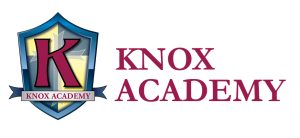Mrs. Angie Paradela
This is my first year of teaching at Knox Classical Academy and it has been a challenging delight. Before this, I was a stay-at-home mom and homeschooled my 5 children. Teaching my children and earning my bachelor’s degree in biblical studies at Simpson University helped prepare me for teaching at Knox. My husband and I have been married for 20 years and our oldest daughter is currently attending her first year of college at Biola University. I am thrilled to be teaching at a school that emphasizes the importance of God’s Word. There is no greater joy than to hear that our children walk in truth, and so we must teach them the truth.
This year, I have been using Picta Dicta curriculum to teach Latin to the 4 th graders. At the end of the year, we will have learned about 100 new Latin vocabulary words. A new grammatical concept is introduced with each lesson and then practiced, giving students a chance to master new vocabulary and grammar concepts as they go. Games are a great way to review old vocabulary. Occasionally, we use the Picta Dicta app to practice new lessons. Students are always eager to learn new vocabulary and I am encouraged to see them internalize Latin grammar and English grammar that will be helpful to them in further language studies.
The fifth graders are also using the Picta Dicta curriculum but are in Volume 2. For them, learning Latin is like breaking a secret code. They are working hard, as they are now required to know and properly use many noun endings from the 1st , 2nd , and 3rd declensions. We have used pictures, hand motions and chants to memorize new vocabulary and grammar concepts. Games are a favorite way to practice old vocabulary. Both 4 th and 5 th graders are assessed using vocabulary and sentence quizzes. Both classes are also working on translating and memorizing The Lord’s Prayer in Latin.
My Latin 1 class consists of 6th and 7th graders. Ecce Romani is the curriculum that we are using. Some of the students have had no experience in Latin, so we are taking our time, and I am trying to make sure that they understand concepts that will be foundational to them as they continue their Latin/language studies. Since English grammar has been foundational for my understanding of Latin, I am attempting to pass on the same foundation to my students. Vocabulary quizzes are given regularly, and vocabulary is expected to be practiced at home. Much of our book work is done in class, where students have an opportunity to work out concepts that are taught, work with one another, and ask questions of me as needed.
A group of 6th through 8th graders are in my Writing 2 class. The class is twice a week for an hour each time. We started off the year memorizing some basics in English Grammar. We also practiced our writing skills by doing free-writing assignments in class, oral and written narration, and answering questions regarding Scripture. The students learned how to pick out key information from an informational text and rewrite in their own words, which is an important skill that aids in guarding against plagiarism. Most texts used were articles on church history. In combination with their Humane Letters class, the students wrote an encomium on Atticus in To Kill a Mockingbird.
Toward the end of the 2 nd quarter, we learned how to summarize a story (book, movie, or otherwise), using a tool called a Story Sequence Chart. This tool helped them organize paragraphs into three categories: character, plot, and climax and resolution. Their favorite writing assignment was when they worked with classmates to write their own story sequence chart, making up the story as they went. We dabbled in adding adjectives and adverbs to make their writing more interesting and practiced re-writing corrected papers throughout the semester. During the first semester, I leaned heavily on what I had learned from a curriculum called IEW that I had used while homeschooling.
Starting the second semester, we have continued learning English grammar, while practicing writing verses in cursive and diagramming them. We have also started using a writing curriculum called Writing and Rhetoric, Book 10. This curriculum is new to me, but it is not new to Knox. I am enjoying learning more about the Progymnasmata, while teaching it. This book is full of great writings and conversation starters that aid in teaching the students how to write a thesis statement and a thesis essay. I am hoping to have them finish the book by the end of the year and have a group of pupils who have a good start on rhetorical writing.
Writing 1 has been my most challenging class to teach, but I have grown to love the students and have the desire to rise to the occasion. This class also meets twice a week for an hour each time. Students’ ages vary from 6 th to 11 th grade. During the first semester, much of what I taught in Writing II, I also taught in Writing I. Writing assignments that were given in connection to the high school Humane Letters class, were written on the books of Jonah and the apostle Paul. I have found that students in the high school are eager and in need of practicing their rhetorical skills. I am now using Writing and Rhetoric, Book 11 in this class and am excited about the students growing in skills that will help them to better write and speak persuasively. The hope is to have the students done with book 11 by the end of the year and have the highschoolers writing longer rhetorical papers.
